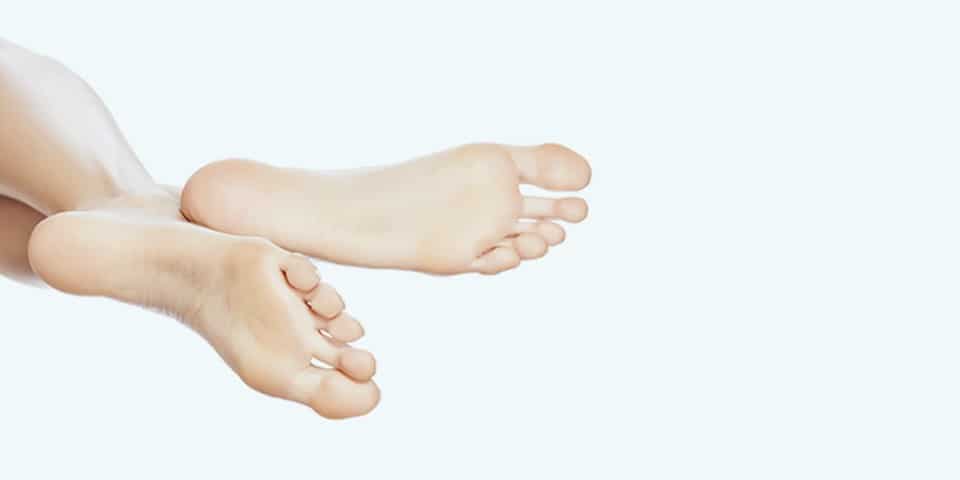Hallux valgus is the most common foot deformity. The big toe is painfully causing limitations in everyday life, for example, while wearing shoes. In a surgical procedure, the deformity can be corrected.
Hallux Valgus: Definition and Symptoms
The Latin term Hallux valgus (Latin for Big toe bent outwardly) describes a deformity on the inner edge of the foot, in which the big toe assumes a painful position. This way, the forefoot gets significantly wider, which can lead to problems in closed footwear (‘shoes conflict’). Patients with Hallux valgus usually suffer from painful abrasions. This allows bacteria and germs to enter the body and cause infections.
Origin and Development of Hallux Valgus
A scientific study from 2012 suggests that Hallux valgus is the most common deformity of the human forefoot and mostly women are affected. In the natural aging process the ligaments slacken with time, causing the bones to lose their footing.
Transferred to the 1st metatarsal (lat. ‘Metatarsal’), this leads to a drift of the ‘loose’ 1st metatarsal towards foot-inside edge.
Hallux Valgus Associated with Osteoarthritis (Joint Wear and Tear)
A common side effect of hallux valgus is osteoarthritis, to which the obliquity of the big toe inevitably leads after a certain period. As a result, the toe stiffens painfully and the patient has to deal with the Hallux rigidus (hallux = big toe, rigidus = stiff).
Cascade Effect with Hallux Valgus
Another problem of hallux valgus is the so-called cascade effect: By moving outward the big toe pushes the neighbouring toes over time more and more to the side. Very often, this leads to lapping of the adjoining toes and results in the emergence of hammertoes or claw toes, which in turn create new problems. In a so-called domino effect or cascade effect, hallux valgus can therefore also trigger further misalignments.
Hallux Valgus Germany: When Should I Consider Surgery?
In case conservative treatment does not suffice, a surgical approach is a valid option.
Modern foot surgery offers gentle and sophisticated procedures that take account of the enormously important biomechanics of the foot. Thus, patients are no longer forced to use crutches or fear immobility due to a cast for weeks after the operation.
A foot surgeon must always pay attention to the individual problems of the patient. Only after thorough study and analysis the best surgical method for each patient can be chosen.
This means: No Hallux valgus surgery off the rack!
As always in medicine, the surgeons’ proper training and experience greatly influence the outcome of the surgery. Only this way risks can be minimized.
Follow-up Treatment: What Happens After the Hallux Valgus Surgery?
- Wearing a special shoe for 4-5 weeks (up to eight weeks after extensive surgery).
- Full weight bearing onto the foot right after surgery in special shoe.
- Removal of stitches after the wound has healed, approximately 2 weeks after surgery.
- Back to work within 4-5 weeks, as soon as the special shoe is no longer needed.
Hallux valgus: Treatment with Foot Specialist Adem Erdogan
Adem Erdogan is among the leading foot surgeons in Germany. Long-standing experience, optimizing surgical procedures as well as detailed diagnostics contribute to an ever-increasing inflow of patients.
Do you have questions concerning the treatment, possible risks and the costs?
After a consultation and detailed investigation Adem Erdogan creates a treatment plan tailored to your personal needs. He will be happy to answer all your questions.
Make an appointment now in our foot practice in Dusseldorf!
You want to know, how other patients rated Adem Erdogan? Check his profile on jameda (only in German language).



